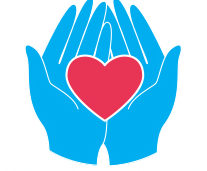
Simple Tips For Rethinking Arthritis Pain
This is a guest post from Joe Flemming, from Vive Health.
Arthritis pain in shoulders, knees, ankles, and other joints is not easy to deal with, especially as we get older and encounter other health problems. Even mild over-the-counter pain relievers, like aspirin or ibuprofen, carry unwanted side effects. And forget opioid pain pills, because they are simply much too powerful and addictive for many elderly people.
To better deal with chronic pain in this age group, first take a step back and consider the source. Pain is just nerve endings telling the brain “something is wrong.” If other nerve endings send the opposite message, the negative flow gets drowned out, and although the pain is still there, it will feel much less intense.
This approach is not for everyone and it does not always work, but it may be just the thing for those who are open-minded enough to give it a chance or desperate enough to try anything.
A simple device, perhaps something like a thumb brace for arthritis or a compact commercial ice pack, is a big help as well, because these attachments kick-start the mental turnover process by easing discomfort at the source.
Get More Exercise
Increased physical activity is a two-in-one remedy, because it not only makes a person feel better, it also decreases arthritis pain in many pople.
Exercise releases endorphins, and they’re called -orphins for a reason. These hormones, which come from the pituitary gland, have most all the properties of morphine, including both morphine’s addictive quality and an accompanying sense of well-being. However, instead of being addicted to pills or needles, which is almost always bad, the person becomes addicted to physical activity, which is normally good.
The activity does not need to be vigorous. In fact, many studies conclude that moderate exercise is the best way to control arthritis pain and release endorphins. That means things like swimming pool jogging, brisk walking, and light stretching.
Most people say they feel better after exercising, and that’s how endorphins affect older folks. Arthritic muscles may still be sending pain messages to the brain, but the positive messages drowns out the pain signals. It may not be exactly like turning down the volume knob on pain messages, but if you know which knob to adjust, it really is almost that easy.
Lose Weight
This area is another daily double, because weight loss makes people look better (and therefore feel better) and also addresses arthritis pain, particularly in certain areas of the body.
To improve self-image, your charge does not need to be a fashion model or appear on a TV advert. For most people, as little as one stone of weight loss makes a tremendous difference. The feeling that comes from adjusting a belt a notch or putting on a forgotten outfit from the back of the closet improves self-esteem almost immeasurably.
Movement also restores joint flexibility, which arthritis has taken away. You’ve probably noticed that most people do not complain about arthritis pain when they are sitting still, but the flare-ups regularly occur when they move around, especially for extended periods. To that end, avoid weight-bearing exercises that put added strain on joints. Instead, focus on the aforementioned water aerobics, brisk walking, and other low-impact exercises.
Hot and Cold Therapy
Heat relieves stiff joints. That could mean a heating pad, a long hot bath, or simply a warm blanket. In keeping with the “mind over matter” theme, older people shouldn’t watch a TV programme with lots of ice and snow in the background as they try to warm their joints. Save them for the next paragraph. Warming therapy is especially good in the mornings.
A cold ice pack relieves discomfort by numbing the area. That numbing usually sets in after about fifteen minutes, which means that it may be faster than a pain pill. So, the next time your mother asks for a pill bottle, go to the icebox instead.
Meditation
Like exercise and weight loss, a mental time-out is a two-in-one.
If endorphin is the good guy, cortisol, which is the body’s main stress hormone, is the bad guy. Cortisol has been linked to a variety of unhealthy conditions. Most importantly for our purposes, cortisol increases tissue inflammation, which means that it worsens arthritis pain. Therefore, lowering stress hormone levels through quiet meditation lowers inflammation and decreases discomfort.
Meditation also switches the mind from thinking about pain to thinking about things that are positive.
All these methods have something in common, which is that they are all easy to implement in small steps throughout the day. A few minutes of physical activity and a few minutes of quiet relaxation produce benefits that everyone, including caregivers, will enjoy.
